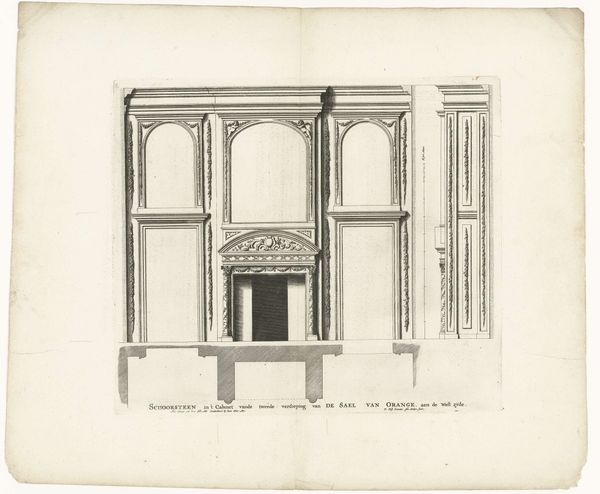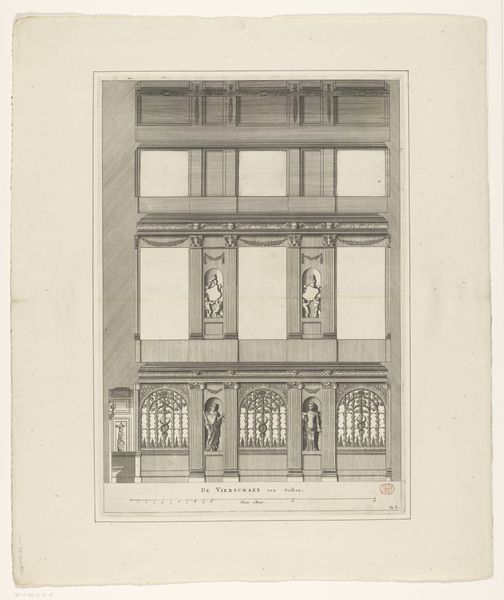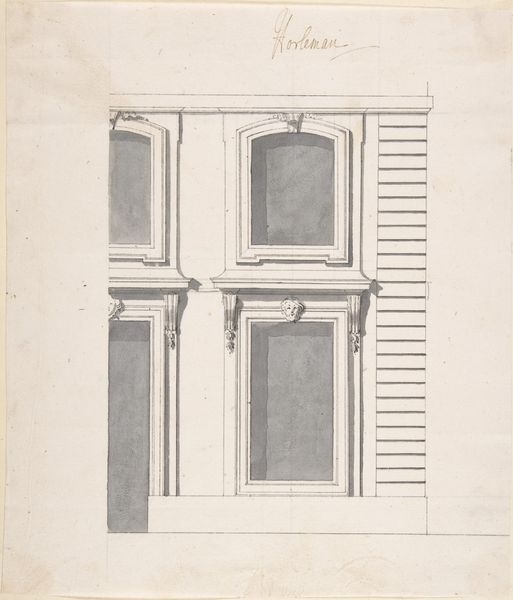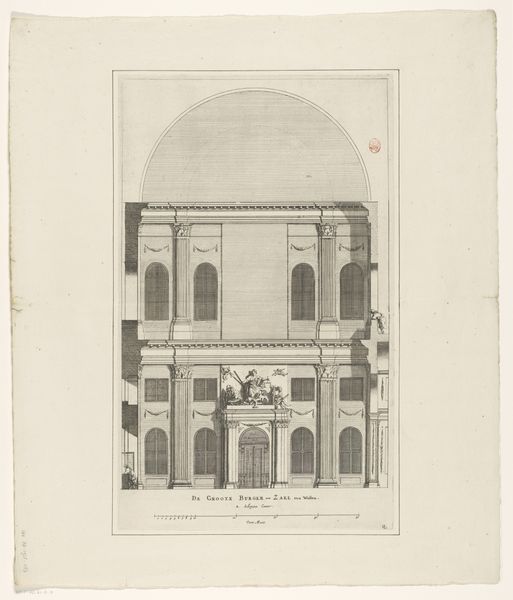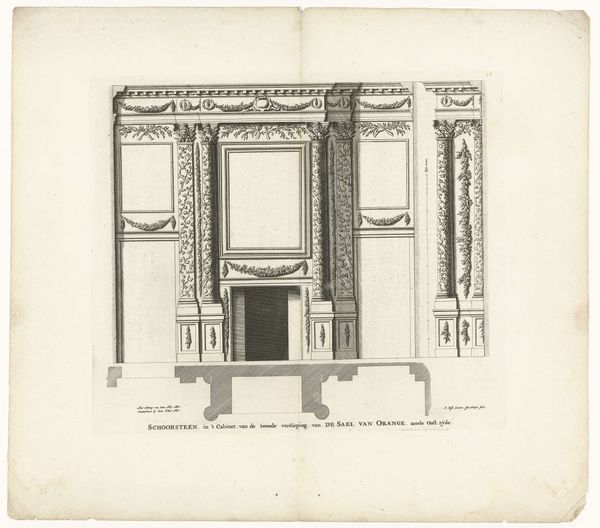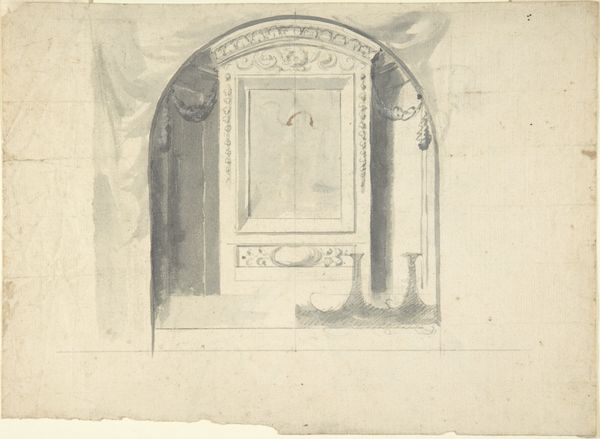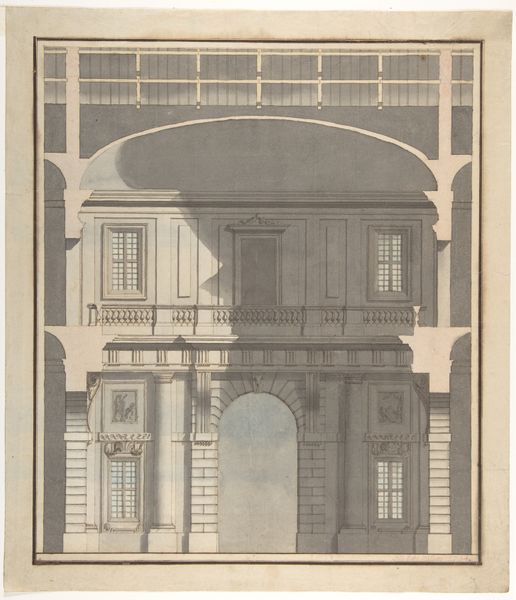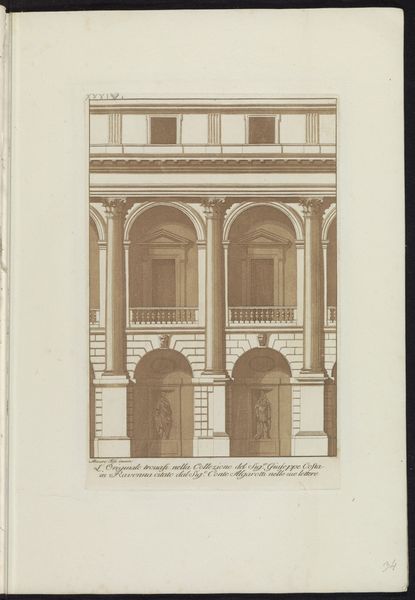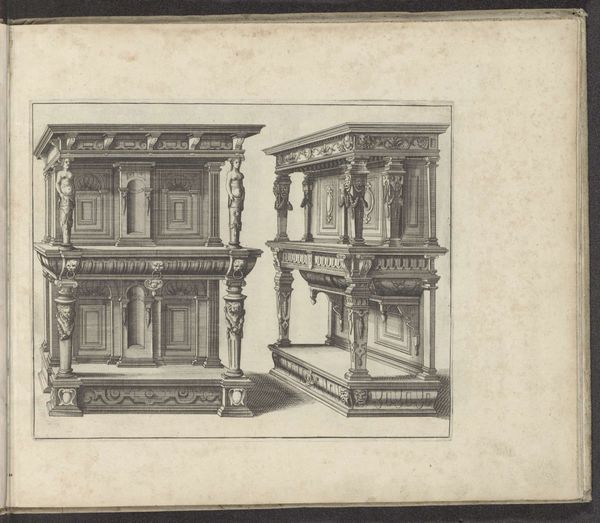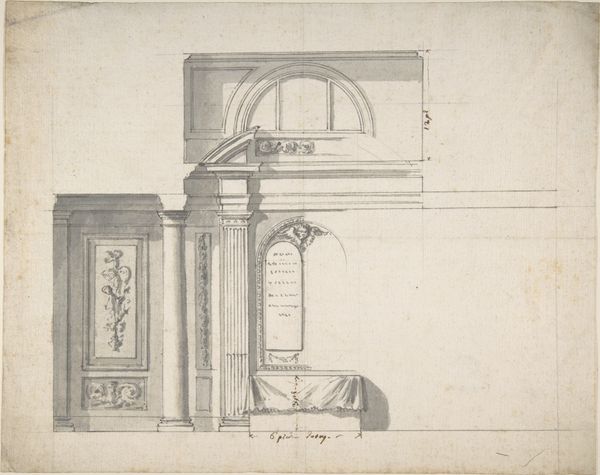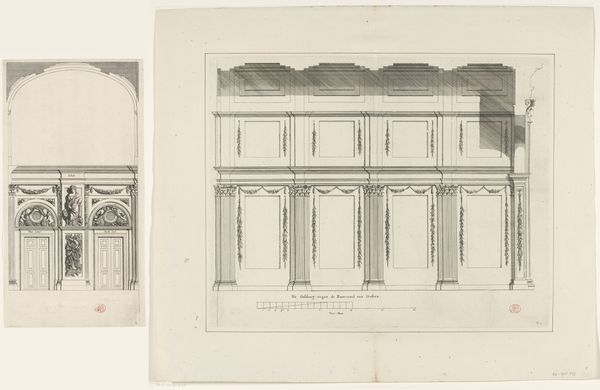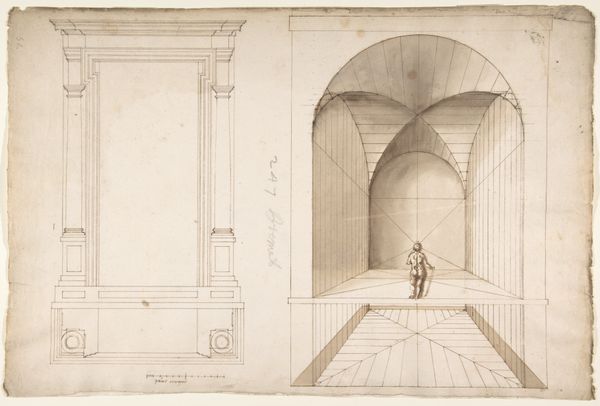
drawing, etching, intaglio, paper, architecture
#
drawing
#
baroque
#
etching
#
intaglio
#
etching
#
paper
#
form
#
line
#
cityscape
#
architecture
Dimensions: height 373 mm, width 442 mm
Copyright: Rijks Museum: Open Domain
Curator: This is "Zuidelijke galerij in het Stadhuis op de Dam (rechterdeel)," or "Southern Gallery in the Town Hall on the Dam (right part)," an etching on paper dating back to 1661. It's the work of Dancker Danckerts. Editor: Immediately, I'm struck by the austerity of it. There’s an almost unsettling emptiness despite all the architectural detail. Curator: Indeed. Danckerts presents a very precise rendering of the gallery's features. It's not just documentation; he’s channeling something of the Baroque fascination with order and proportion. Look how he employs line work and formal architectural elements to highlight power. Editor: And how that precision almost feels oppressive! The symmetry, the rigid framing… it all speaks to a society obsessed with control, perhaps masking deeper social tensions. It reminds me how art can sometimes sanitize potentially revolutionary politics into mere formal display. What about the choice of elements? Are they all deliberate? Curator: Absolutely! Take the sculpture within the niche, with a caduceus placed below. This symbol of commerce or health speaks volumes about the values prized by the Dutch Republic at the time. Its placement along a structural load-bearing wall shows what ideals supported that structure. The whole image reverberates with symbolic import. Editor: It also emphasizes the elitism embedded within spaces like town halls. The architecture itself becomes a symbol of exclusion, a reinforcement of who belongs and who does not within that structured civic space. What do you think this reveals about its social function, not just in 1661, but across history? Curator: Spaces like these are never truly neutral. They reflect a very particular worldview, shaping social discourse. It speaks volumes that images like these are now preserved inside the Rijksmuseum, a former imperial institution for artifacts, suggesting ongoing renegotiations in civic identity, cultural memory and symbolic continuities in Dutch identity. Editor: That's a poignant reflection—the shift from town hall display to museum piece, underscoring a shift in collective social memory. Curator: Yes, after revisiting, I see new depths of Dutch cultural memory. Thanks to you! Editor: Indeed, these kinds of collaborations are fruitful when art meets politics and together, the image reveals its place in time.
Comments
No comments
Be the first to comment and join the conversation on the ultimate creative platform.
